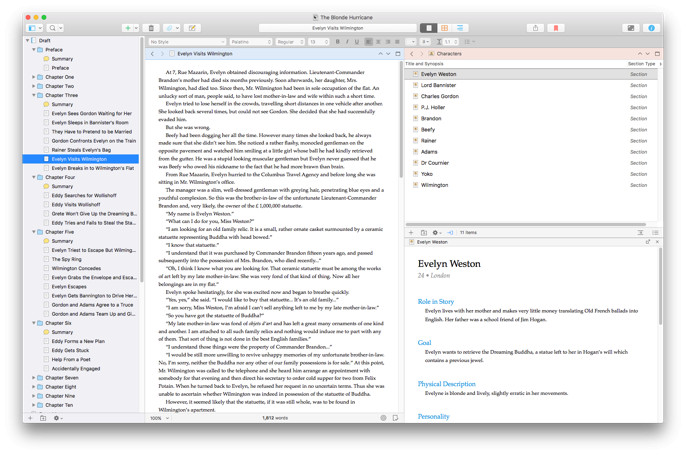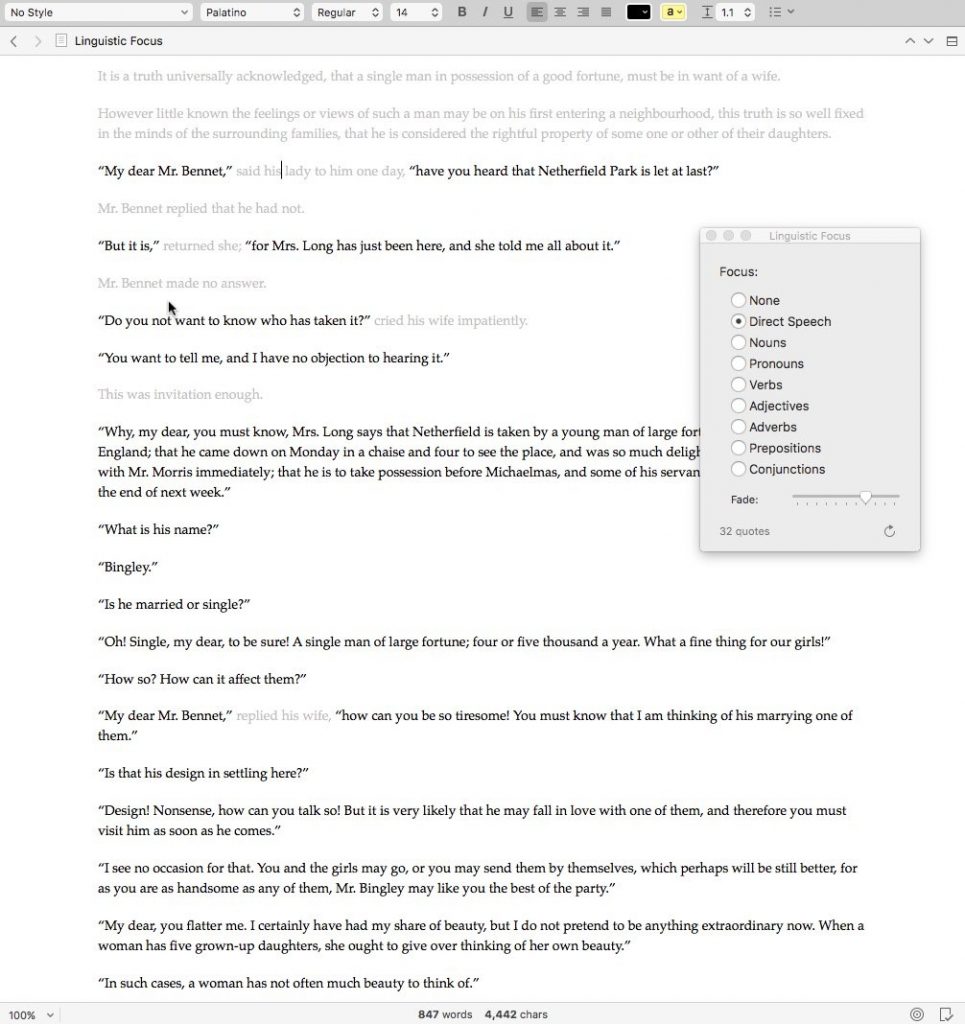Do I Have to Buy Scrivener Again
Scrivener is a robust — and complex — piece of writing software. Intended as a one-stop solution for writers of all skill levels, Scrivener has a wide range of useful features… if you can figure out how to work it.
Pros:
- Powerful app with helpful features for every writing stage
- Flexible interface users can tailor to their needs
- Free templates
- 30 day free trial
Cons:
- Complex to learn
- More expensive than many other writing apps
- Most users will only use a small handful of the features
For this review, the team at Reedsy has analyzed Scrivener 3 with an aim to provide transparency and context. As a network that has helped authors publish over 10,000 books, we know the different needs authors have and are able to provide context for what features are the most useful, as well as what kind of writers would benefit from them.
If you want to cut straight to the chase and find out if Scrivener is the right writing app for you, we recommend taking this quick 30-second quiz.
🖋️
Which writing app is right for you?
Find out here! Takes 30 seconds
Otherwise, let's dive in!
What is Scrivener?
Scrivener 3 by Literature and Latte is a word processor for Windows and Mac. Offering a variety of organizational features, formatting options, and goal tracking, Scrivener has been expressly designed to help fiction and nonfiction authors, screenwriters, journalists, academics, and more.
One of the issues many writers of long texts face is the ease of navigation: assembling all their research and information in a way that's easily accessible. Scrivener helps with this, offering writers the tools to organize concepts, notes, research, photos, videos, documents, and more.
Fun fact: What does a scrivener do? Back in the day, a scrivener (or scribe) was someone who could read and write, and made their living writing or copying material on behalf of others.
How much does Scrivener cost?
Scrivener 3 costs $49. However, if you purchased Scrivener 2 on or after August 20, 2017 can upgrade for free (users who purchased Scrivener 1 or 2 before that date can get a 45% discount off the purchase price).
Scrivener also has a 30-day free trial period, though it's actually 30 days of use — so if you only use the program two times a week, you will have the trial for 15 weeks.
How do I upgrade to Scrivener 3?
If you already have Scrivener 2, you can upgrade via the Literature and Latte site. Click here, then select "Upgrade from an older version" in the trial window.
The Binder: All your work in one place
At the center of a Scrivener project is the Binder. Touted as an innovative means of keeping all your notes, research, and manuscript files in one place, the Binder is really just a sidebar full of files. While it is incredibly useful to have everything within easy reach, Scrivener didn't exactly invent the idea — sidebars have been used in everything from email to file browsers to, yes, writing apps, for decades now.
Still, Scrivener's Binder does the job very well. And since there are so many different types of files associated with a Scrivener project, there needs to be a means of keeping them organized. Files in the Binder can be grouped together in subfolders, labeled with different colors and icons to allow for easy categorization and organization. It even includes a Trash folder, so you don't need to worry about accidentally deleting something.
Corkboard: Get a big-picture view
A classic outlining and editing tool for writers is a simple stack of notecards. By writing down what happens in each scene and spreading the notecards out on the floor (or pinning them to a corkboard) authors have long been able to visualize their project as a whole, moving scenes around until they have a plot that flows smoothly.
Scrivener's Corkboard mode takes that idea and runs with it. Each file in your project gets a "card" that you can customize with colors and labels, and then rearrange with ease. Like everything else in Scrivener, this feature is endlessly customizable, so each writer can develop a system that truly serves their workflow.
Bookmarks: Quick access to what matters
Software that claims to help you do something — like learning how to write a book — needs to walk a fine line between offering a variety of functions while also having an organized and easy-to-navigate interface. To that end, Scrivener utilizes a Bookmarks system.
It's exactly what it sounds like: you can seamlessly access any project documents that you refer to frequently. But what makes it especially useful is that clicking on a bookmarked document will open it side-by-side with your current document, allowing you to reference or edit it without having to switch back and forth between texts.

Let's say you're writing a novel and somewhere along the way you decide to make a big change to a character. If you have character templates or character development documents bookmarked, you can reference them right away and make a note of the change there, without skipping a beat in your writing session.
Templates: Save your settings
Because Scrivener has so many customization options, you may feel overwhelmed by the idea of configuring all those settings, only to do it again the next time you start a new project.
This is where Templates come into play. Scrivener lets you save all your options as a sort of "preset" that you can easily select for each new project you write. So if you've got a specific way you like your Binder set up for a long-standing fantasy series, you can just select the template when you start writing book twelve, and all the customization you've decided on for the first eleven books is ready and waiting for you.
Of course, if this book writing software wasn't so complex to set up you wouldn't need to save a template. But since it is, it's great not to have to reconfigure everything each time.
Linguistic Focus mode: Zero in on problem areas
Linguistic Focus is a great tool that can help you identify and iron out your writing tics. Essentially, you can specify types of words or dialogue (direct speech, nouns, pronouns, verbs, adjectives, adverbs, prepositions, or conjunctions), and Scrivener will highlight that language within your story.
Why is this important? Well, let's say you want to make sure that your dialogue tags aren't distracting. Or maybe you have the feeling you're repeating the same adjective throughout your writing. Linguistics Focus will allow you to zero in on these things to make sure your writing is as effective as possible.

So what's the bottom line?
Scrivener works best for professional writers who:
- Have lots of notes or research associated with their books
- Plan to write a lengthy, in-depth series
- Plan to do extensive self-editing, or collaborate with an editor in another program
- Enjoy learning how to do new things on their computer
Scrivener may not be a good fit if you:
- Aren't very tech-savvy
- Want to jump into writing faster (for that, we recommend Plottr or the Reedsy Book Editor)
- Write shorter pieces (essays, short stories, poems, children's books)
- Need to collaborate easily, especially across multiple platforms
Reedsy rating: 4/5
[Updated: 07/20/2020 UTC]
Source: https://blog.reedsy.com/scrivener-3/

0 Response to "Do I Have to Buy Scrivener Again"
Post a Comment